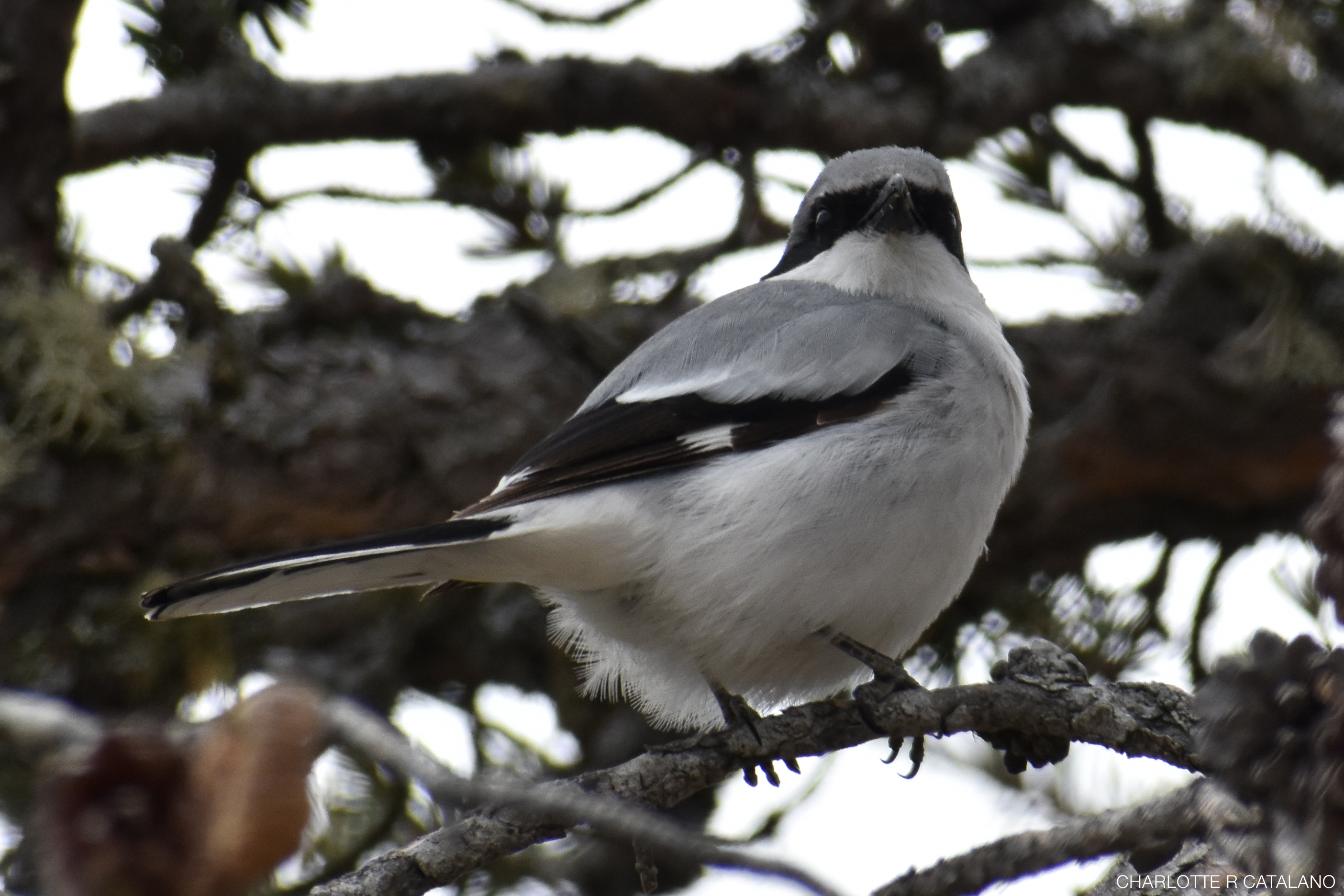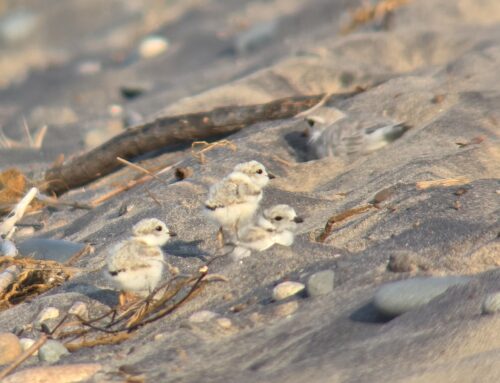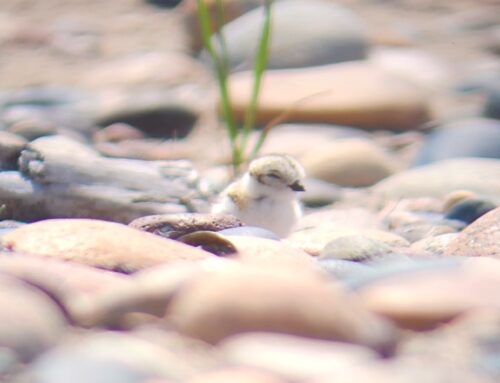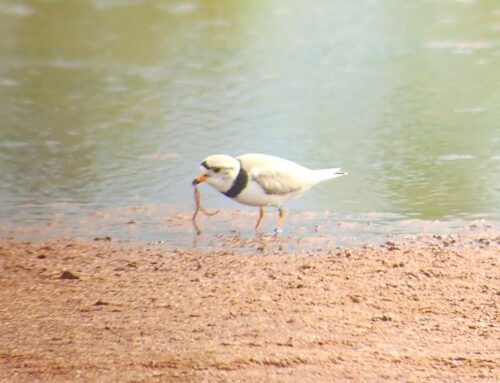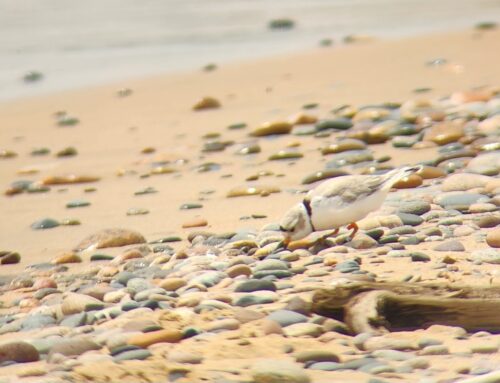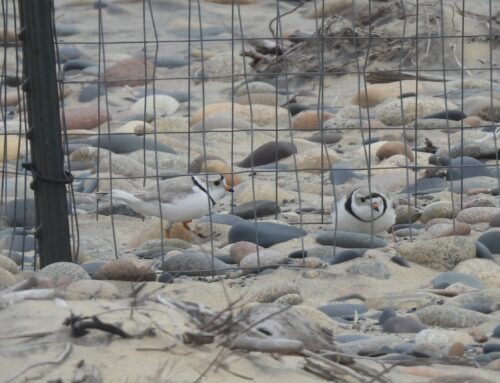On April 29 and 30, a Loggerhead Shrike (LOSH) was seen at Whitefish Point. The sighting, once accepted, will be the fourth record of a LOSH at WPBO.

A Loggerhead Shrike seen on April 29, 2019 from the waterbird shack. Photo by Alison Vilag
Loggerhead Shrike are state endangered in Michigan. The shrike inhabit open grasslands, prairies, and pastures. Beginning in the 1960s, the bird species declined dramatically for a variety of reasons most prominently associated with pesticides, changes in farming practices, and loss of habitat to development and vegetation succession. Since then, the shrikes sporadically breed in the state with some years passing by without a confirmed breeding pair.
Loggerhead Shrike are easily confused with Northern Shrike (NSHR) but can be differentiated from NSRH with a few key characteristics: LOSH have a thicker black mask that bridges the bill, the black mask lacks a thin white stripe that borders the top of the mask, and they have a stubbier bill.
Also note that, excluding migration, NSHR are only seen in Michigan in the winter while LOSH are only seen in the state in summer. Consequently, the only time the two should be confused is in migration, which means carefully analyzing field marks is the best way to get a good species identification.
– Charlotte R. Catalano, WPBO Field Ornithologist
Featured Photo: A Loggerhead Shrike seen on April 30, 2019 at Whitefish Point. Photo by Charlotte R. Catalano

